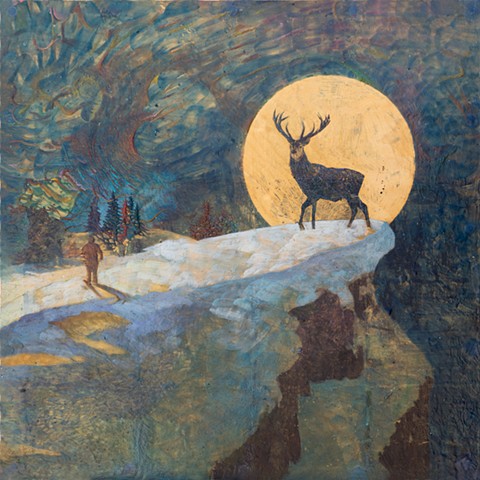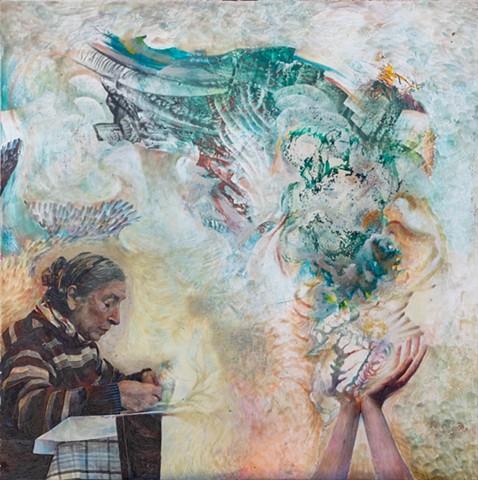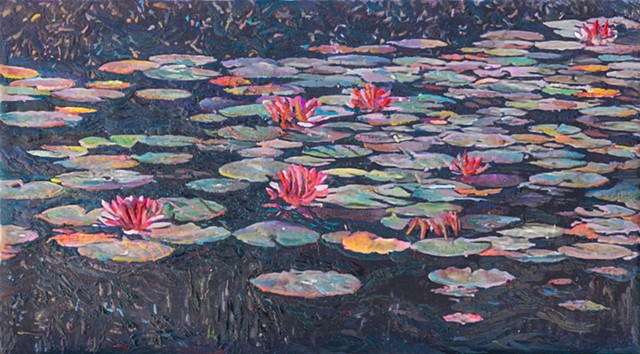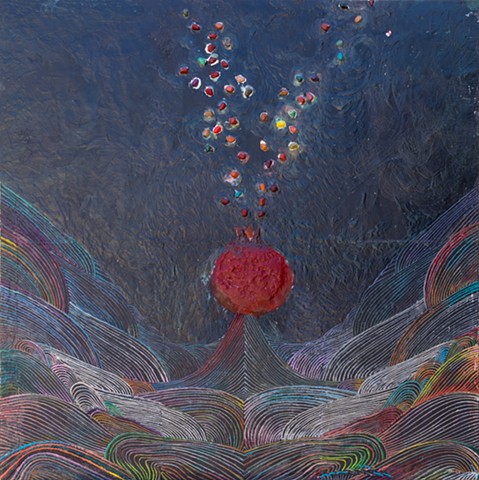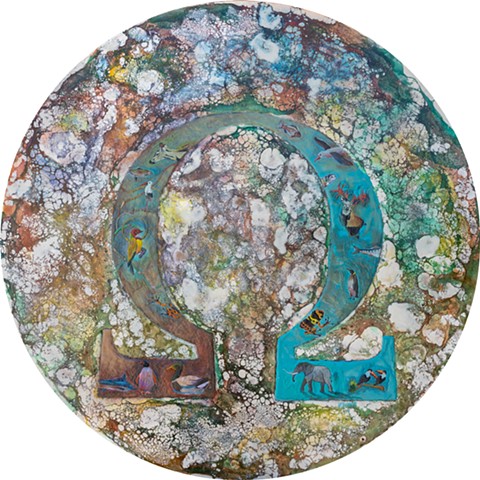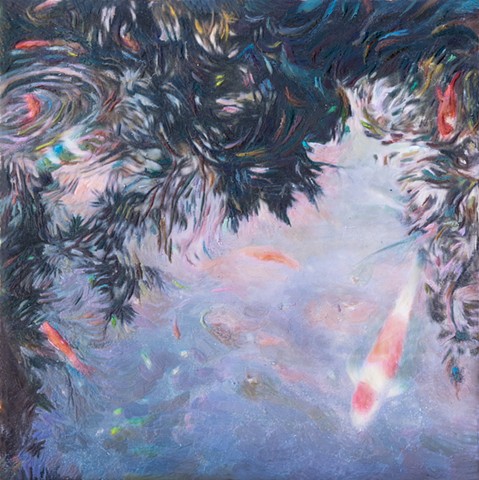Transitions
‘O dark shivering in the roots and the leaves
if it were but you who would bring the forgotten dawn!’
G. Seferis
[transl.E. Keeley & Ph. Sherrard]
Beyond the land of dreams*
Transformations in the art of Alexis Avlamis
The sea; the feast of colours in a sunset; sunflowers; fish; fir-trees; mount Ainos; the botanical garden; the fruits and flowers of the goddess Demeter; the light on a mountaintop; marvellous cloud formations against the broad sky; fruit trees; the heart of an artichoke and blue potatoes; water lilies; wild fauna and flora; the white owl; the treasures of the earth’s bosom; the deeds of nature and the deeds of humans.
All these are the subject matter of a reflective art that seeks to connect imaginary and realistic landscapes and forms through the multivalence of images; to bring together the inner, idealist life of things with their tangible and earthly substance; to unite a cosmic dreamworld of symbols with the wonder of the solid, primal force of the tangible world. This is the deeper essence of the art of Alexis Avlamis. An art in which the freedom that comes with idealising our surrounding world meets romanticism, the tenderness and humaneness of a lived place and time; an art expressed through the deep and real senses of smell, taste, and touch – senses that have their own true homeland, and this is the homeland of their creator’s soul. A homeland that suggests to us the moral importance of art through a longing for a life that is real, full of imagination and dreams, and for a cosmic dreamworld full of the natural sap of earthly nectar.
Through a rich visual conversation with the real world, through ‘counsel and dream’, Avlamis’ art unfolds sometimes as a whisper, sometimes with reverence, sometimes with grandeur and opulence of colour, sometimes with elegant poetic sensibility, sometimes with refined decorative qualities, crystallising those rare sensations around us and within us, and uniting man and nature into an indivisible whole. Through visual immediacy with regard to the natural environment, through exact documentation of its detailed hues, through meticulous and faithful rendering of the natural landscape, through a gentle and mysterious flickering between light and shadow, through stark contrasts and sensitive tonal gradations—here, a world of reality in transformation is visually captured, a truth under the sway of an ‘other’ life, outside conventional time.
This is a world of an exotic subconscious, of poetic fantasies defined by a relation of wonder and worship towards human existence within the universe, by a relation between the here-and-now and what lies beyond, in which human presence and life on earth explode into cosmic infinity, into the dimension between now and forever. Through their continual renewal in expressivity and through the wealth of their artistic idiom, the transformation and the fluidity of visual material allow the emergence and manifestation of a natural habitat in which we find the convergence and flourishing of controlled gesture and of the arbitrariness of artistic material, the conscious and the unconscious, the fleeting and the permanent, the cold and the warm, the fluid and the solid, the immaterial and the concrete, the two-dimensional and the textured, tangible clarity and lyrical vagueness, rationality and venturing beyond it.
The art of Alexis Avlamis is rich in allusivity, with deep roots in the past while also conversing at the same time with a present and future that is technocratic, undefinable, and disquietingly dazzling. What will come out of this lyrical, dark musicality of time? The female figures—elvish and pixie-like creatures, nostalgic utopias, mythological memories, sensual depictions of mother earth—are dominant and contemplate ‘today, as tomorrow and as yesterday’, gazing at the hues of infinity with the dignity of their own moral and aesthetic presence. The sense of time that is implied here, that frames these figures and imbues these forms, is time in motion yet unmoving, an atemporal sense of time, in opposition to but also in coexistence with private and historical time, the personal and communal experience.
Through these thin and multiple layers of memory, through successive stratifications of creativity in colour, through visual and conceptual free associations, we set out for a journey to a visual place resonant with the memory and nostalgia of the future. This is an ideal visual place located on the border betwixt and between the material and immaterial world, betwixt and between ceaseless motion and stable, immobile monumentality.
Wax painting—the art of encaustic that Alexis Avlamis serves with humility and knowledge, this ancient technique and artistic method—is the hidden refuge of immortality, the inextinguishable hope for eternal living presence, beyond death. Encaustic strives ceaselessly, in optimistic desperation, to preserve living remnants, to retrieve and foreground the sense of life through the corporeality of wax, to preserve in time, through the persistent endurance of wax, the precious sense of the continuity of human life and the world. It is an art form that—through this rare, malleable, long-lived material that is wax—seeks to inscribe, to mould, to build our common denominator, our common need to occupy together the same space, our need to preserve memory from oblivion, our need to keep returning always to the core. To the core. To our home. And what is our home? Art itself. And its creator is a naturalist, a cultivator, a labourer who strives to raise seedlings in the ground—he knows their time.
‘A time to sow and a time to reap.’
And alongside the creator also the creative spectator: an immigrant in a new continent, in the kingdom of a fairy-tale story, in the domain of a genuinely earthly and hence also dreamlike world.
‘Beyond the land of dreams.’
Jannis Psychopedis
Professor Emeritus of Painting, Athens School of Fine Arts
*Homer, Odyssey 24.12


